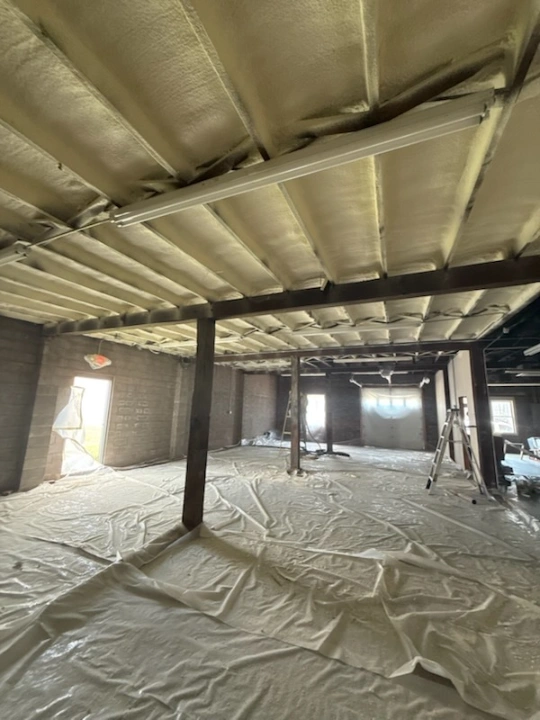
Sudden spikes in energy bills, uneven temperatures between rooms, and moisture build-up are strong indicators your home may require spray foam insulation. These signs often point to air leaks, poor thermal resistance, or ineffective insulation in the walls, attic, or crawl space. Spray foam insulation addresses these issues by sealing gaps and preventing heat loss more effectively than traditional materials.
In areas with fluctuating humidity and temperature patterns such as Kentucky, spray foam creates an airtight barrier that reduces the risk of condensation, mold growth, and structural weakening. Armored Insulation relies on practical experience handling insulation upgrades in a range of building types and seasonal conditions to identify these issues accurately and recommend solutions backed by industry standards.
| Location | Seasonal Impact | Insulation Issue Trigger |
|---|---|---|
| Attics | Winter heat loss | Warm air escaping causes snow melt and ice dams |
| Crawl Spaces | Summer humidity | Moisture buildup leading to wood rot |
| Exterior Walls | Year-round temperature | Drafts and inconsistent indoor temps |
| Type | Air Seal Capability | R-Value per Inch | Moisture Resistance | Typical Application Area |
|---|---|---|---|---|
| Spray Foam | Excellent | 6.0–7.0 | High | Attics, walls, crawl spaces |
| Fiberglass Batt | Low | 2.9–3.8 | Low | Walls, unfinished basements |
| Blown-In (Cellulose) | Moderate | 3.2–3.8 | Low | Attics, closed wall cavities |
| Mineral Wool | Moderate | 3.7–4.3 | High | Fire-rated areas, walls |
Bonus Tip: Spray foam expands into every gap, which helps eliminate cold spots and reduces external noise transmission.
| Property | Open-Cell Spray Foam | Closed-Cell Spray Foam |
|---|---|---|
| Expansion Rate | High | Low |
| R-Value per Inch | 3.5–3.6 | 6.0–7.0 |
| Vapor Barrier | No | Yes |
| Sound Dampening | High | Moderate |
| Structural Reinforcement | No | Yes |
| Best Use Areas | Interior walls, soundproofing | Exterior walls, crawl spaces |
Source: U.S. Department of Energy, Building Science Corporation

Bonus Tip: Inspect attic insulation before summer. Rising attic temperatures affect cooling system performance and increase energy consumption.
Start with the attic and crawl space, where the most heat loss or moisture intrusion tends to occur.
Old insulation must be removed if it is wet, damaged, or compressed. Otherwise, new spray foam won’t adhere properly.
Most residential applications take one to two days depending on square footage and accessibility.
Yes. It is especially useful in older homes where gaps and unsealed areas are more common.
Armored Insulation provides direct, on-site evaluation and offers insulation options specific to structure and climate:
Look for energy spikes, air leaks, or signs of moisture. Use professional assessment tools to test and confirm insulation gaps. Combine material performance data with building characteristics to determine fit.
For accurate testing, safe removal, or application of spray foam insulation, contact Armored Insulation. Email [email protected] or call (270) 331-4844 to discuss your home’s condition and insulation needs. No sales pitch—just experienced answers from trained professionals.
Properly installed spray foam insulation can last over 30 years without degradation.
It requires minimal upkeep. Regular home inspections help identify any unrelated structural shifts or breaches.
Spray foam is not a food source, but rodents can nest if access points remain elsewhere.
Over-application can stress walls or framing. A trained installer will calculate correct thickness.
Once cured, it is inert and safe. Proper ventilation is required during installation.